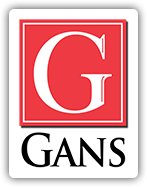As the general public becomes more concerned about the causes and potential solutions to global warming, carbon footprinting of products and processes is becoming commonplace. Unfortunately, as far as lithographic ink is concerned, the basic public data does not exist at this point to calculate, with precision, such a complex factor as the amount of CO 2 generated in the manufacture of oil- based printing inks. This is due primarily to the dearth of information pertaining to the production of raw materials that go into the finished ink.
Some of the steps in the ink making process that must be quantified in order to determine the amount of greenhouse gases generated, measured in units of carbon dioxide, include:
- Determine the amount of energy used by Gans Ink in the actual production of printing ink, as well as facility management, and transform this value into it’s CO 2 equivalent.
- Determine the amount of CO 2 generated by all Gans Ink employees commuting to and from our 11 locations across the country.
- Determine the amount of CO 2 generated by all of Gans Ink’s distribution methods, both internal and third party transport companies, nationwide.
Gans Ink is actively gathering the above listed data in our initial effort to determine our part in the overall carbon footprint of a pound of Gans ink. As complicated as these steps are, however, they are the easy part. The much more critical information in this equation is as follows:
- Determine the amount of CO 2 generated during the collection, processing and transport of the many different resins and pigment flushes used in the ink making process. These processes include forestry, mineral mining and chemical refining. Keep in mind that many, if not most of these items come from other countries like Brazil, Argentina, China, India and many others. These sources are simply unable to provide this information at this time, and the lack of regulatory control makes both the quality and consistency of any data suspect.
- The production processes of our various packaging materials must also be included in these calculations. Gans’ finished inks are primarily packaged in steel 5 pound cans, although a growing minority is also going into plastic buckets or extruded plastic and fiber cartridges. These packages are then packed into a corrugated carton for shipment. Each of the different processes involved in the manufacture of the packaging materials must be in some way factored into the overall total CO 2 footprint of a finished pound of Gans ink as well.
Please understand that Gans Ink believes this is important and necessary information the buying public needs, in order to weigh the differences in environmental impact of one printing process over another (i.e. sheet- fed versus heat- set web). Over recent months we have seriously researched this issue, involving both the technical arm of the U.S. ink manufacturing industry’s trade association (NPIRI), as well as the European ink industry’s association (EuPIA). Based on the best scientific data and calculations available to the ink industry at this time a rough estimate of CO 2 emissions per a typical pound of ink is 100- 200 grams of CO 2 per kilogram of ink, or 45- 91 grams of CO 2 per pound of ink.
Gans Ink has been very involved in the emerging area of printing- related sustainability efforts. While we have been manufacturing printing inks based on renewable vegetable oils for over 30 years, having established some of the soy content guidelines for printing ink formulation with the American Soybean Association, we have gone much farther than this in our efforts to minimize our impact on the environment.
One of our most popular process inkset’s in production today is our Nu- Centura Low VOC. This ink is much more than just a process ink that contains the minimum of 20% soy oil. Nu- Centura is an ink that dries with virtually NO volatiles exhausting into the air! Additionally, this ink has been developed to contain 72% organically, renewable materials, a level of sustainability far higher than any traditional process inkset on the market today.
Gans is also a supply company. In the last few years we have devoted more resources and energy to developing low to zero VOC pressroom chemicals than to any other division in our company. Our zero VOC Autowash Zero press washup solvent, along with several other cleaning solvents below 100 grams per liter of volatility, have been accepted widely in areas of the country where printers have been required to lower their VOC’s, and among printers that simply want to market themselves as “Eco- Friendly”. We also have MRC, plate cleaners and other low VOC pressroom chemicals that help minimize environmental impact, and also work effectively.
In addition to these product related technological contributions to the industry, as a company, Gans Ink has shown leadership in the effort to reduce waste and energy consumption. While recycling efforts may exert less pressure on the environment, in many cases re- use of a product is nearly a 100% reduction in energy consumption. As far as we can tell, Gans Ink is the only ink manufacturer that currently has in place a nationwide re- use policy for the vast majority of our corrugated shipping containers. Printers across the country using our products simply call their local Gans Ink branch when they have accumulated enough cartons to warrant a pickup. We then take these cartons and put them directly back into our distribution stream. Gans Ink has significantly reduced the amount of new cartons we require, and we haven’t yet seen the limits to this re- use program for these durable cartons.
Currently, Gans Ink is evaluating the feasibility of instituting a recycling program for all 5# steel ink cans we deliver from our local branches. Similar to our carton re- use program, printers will remove as much ink as possible from these cans, set them aside until they accumulate enough to schedule a pickup, and we’ll do the rest. Again, as far as we can tell, like our carton re- use program, there is no other ink manufacturer that has instituted such an aggressive steel recycling program.
Gans Ink & Supply Company understands that the goal of totally sustainable ink products and manufacturing processes, that are truly carbon neutral, will never be perfectly achieved. Defining these terms and continuing process improvement is a work in progress, and a part of our overall commitment to the environment and future generations.


